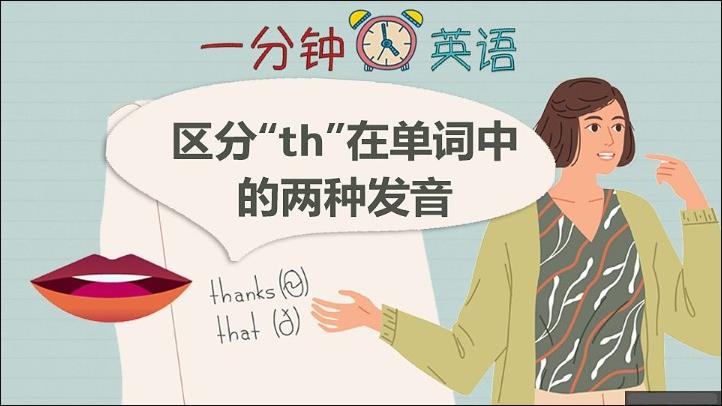内容简介
对一些英语初学者来说,“th” 发音有些难度。“This” 和 “thing” 都以 “th” 开头,但这两个词中的 “th” 发音一样吗?如何区分 “th” 的浊音 /ð/ 和清音 /θ/?看视频,跟主持人 Sam 学习 “th” 在单词中的两种发音。
文字稿
Let's start with the shape of the mouth.
For both sounds, we put our tongue between our teeth and push air out between them.
The difference is that the first one is voiced, which means we use our vocal cords, and the second one is unvoiced, which means we don't use our vocal cords.

OK, try this:
Voiced – /ð/ vibrations.
Unvoiced – /θ/ no vibrations.
Can you feel the difference?
Now let's practice with some common words you already know: this, thing, though, through, mother, birthday, clothes, fourth, bathe, bath.
And of course, it helps to put them in a sentence:
I never sunbathe, but I love a bath.
But remember to say them out loud, so you're practising the pronunciation.
用法总结
“Th” 的两种发音嘴型一样:将舌头放在牙齿间,并将气推出。
发浊音 /ð/ 时,声带震动。以下单词中的 “th” 发浊音 /ð/:
the
this
that
though
mother
father
weather
clothes
bathe
breathe
there
worthy
发清音 /θ/ 时,声带不震动。以下常见单词中的 “th” 发清音 /θ/:
teeth
thing
thank
through
birthday
think
fourth
three
bath
breath
therapy
maths
worth







